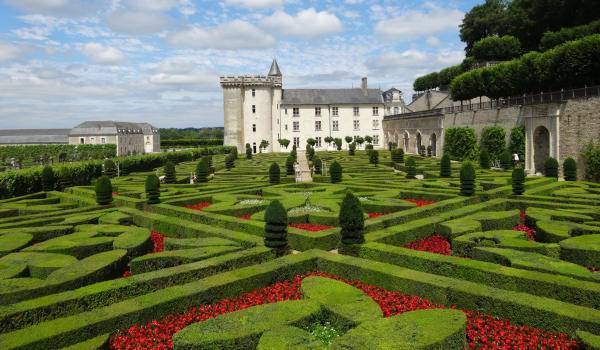
The chateaux of the Loire Valley each tell a story, many stories in fact, mostly told in limestone and slate. But not all of its stories are written in stone. Some are also told in vegetation (gardens, parks, woods and forests) and water (rivers, streams, canals and basins).
* * *
Summer now brightens the Loire Valley. The limestone chateaux sparkle in ochre and gold. Chambord stands out in a clearing in the forest as an enormous and intricate block of limestone encrusted with slate in its crown. Cheverny appears bleached in the midday sun. In summer’s light Chenonceau seems to prance more lightly than ever over the Cher River. Azay-le-Rideau now enjoys its days in the sun after several years of restoration. The slate bands of Angers glisten grey.
But there’s more to these chateaux than elegant masonry. This year, while continuing to honor its royal and noble stonework, the Loire Valley is celebrating its gardens and their history. Whether you think of it as the Loire Valley, Val de Loire, the Valley of the Kings or “that region with all the castles,” the valley, with its confluents, is now in full bloom.
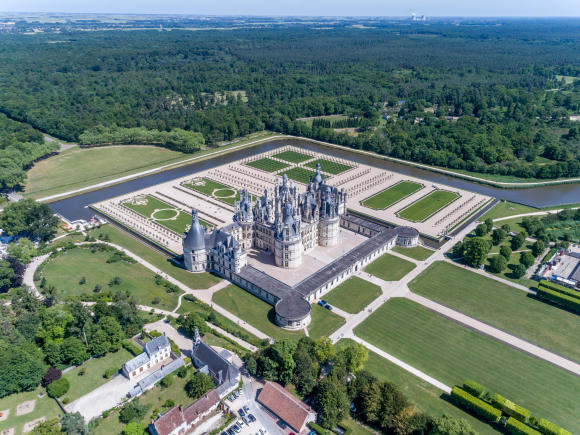
The history of the chateaux of the Loire Valley is intimately linked with the history of France of the 15th and 16th century. During that period the kings, along with their financiers and entourage, frequently sojourned in the valley. That period corresponds to an evolution of the architecture of the dwellings of the rich and powerful. The high crenelated walls, blind except for their arrow slits, of the defensive castle lost their utility in the 15th century; canons and other arms meant that defenses had to be further out. Castle architects could therefore drop their defenses, so to speak, giving way to more open, ornamental configurations in the form of luxuriant castles and palaces. At the same time, the castle garden evolved from plots for fruit trees, vegetables and herbs to the geometric embroidery of what came to be known as the French garden.
Even though the Bourbon kings in the 17th century returned their focus to Paris (the Louvre, the Tuileries) and the capital region (Fontainebleau, Saint-Germain-en-Laye, finally Versailles), the chateaux of the Loire Valley were not forgotten. And their surroundings gardens often expanded along with the scope and fashion of the French garden. By the 18th century the arrival of exotic plants from the New World at the port of Nantes, at the far end of the valley, further enriched noble gardens with vegetation, trees and medicinal plants.
The history of French gardens is therefore intimately related to that of its chateaux, and nowhere is that more apparent than in the Loire Valley.
UNESCO World Heritage Site
The Loire flows north from low in the center of France before veering west to the Atlantic. When we speak of Val de Loire, the Loire Valley, we refer to the 180-mile stretch of that western flow, from Sully-sur-Loire (southeast of Orleans) to Nantes, including its surrounding confluents and rivers: the Cher, the Indre, the Maine, the Loir.
UNESCO has designated the banks of the Loire from Sully-sur-Loire to Chalonnnes-sur-Loire (just short of Nantes) as a World Heritage Site, calling it “an outstanding cultural landscape of great beauty, containing historic towns and villages, great architectural monuments (the châteaux), and cultivated lands formed by many centuries of interaction between their population and the physical environment, primarily the river Loire itself.”
This year the Loire Valley Mission has placed the region’s gardens as the centerpiece of the cultural season. From château to château—some we may think of as castles, some as palaces—gardens and garden exhibitions throughout the valley invite travelers to take a stroll through the evolution of French gardens: from the closed medieval garden square to the fountains and grottos of the Italian-cum-French gardens of the French Renaissance to the vast aristocratic and royal gardens developed around a central axis, and in some cases to English gardens of the 19th century.
Villandry
The Year of Gardens in the Loire Valley was launched this spring at the valley’s the most famous gardens, those of Villandry.
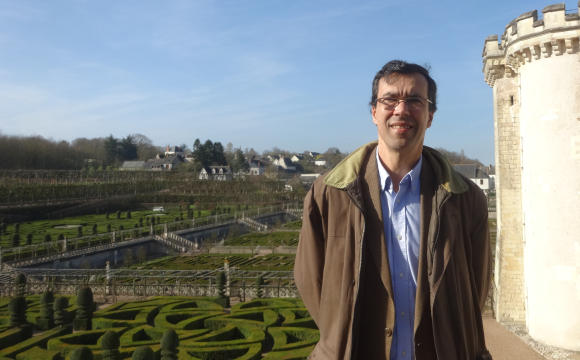
Henri Carvallo, Villandry’s owner, is the great-grandson Joachim Carvallo, a Spanish doctor, and Ann Coleman, an American heiress to the Coleman iron and steel business, who purchased the property in 1906. They (re)created the Renaissance garden based in part on vegetal archeology, eliminating in the process a 19th-century English garden created by their predecessors. At its origin (during the Renaissance and for the Carvallos) the kitchen garden was created for both decorative and botanical purposes. The Carvallos added terraces, symbolic ornamental hedge gardens, a labyrinth and a water basin.
Joachim Carvallo founded La Demeure Historique, an association of private owners of historical homes and gardens, which remains an important player in the field of heritage sites in France.
Having grown up with a vegetal game board for a backyard, it’s no surprise that his great-grandson Henri Carvallo would become adept at the game of chess. He is a former president of the French Chess Federation and chess tournaments are occasionally held at Villandry.
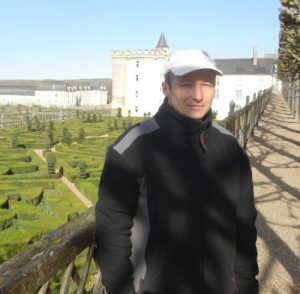
Ten gardeners work full time at Villandry, with Laurent Portuguez at the helm. Portuguez was hired 10 years ago to head the project for the construction of a new garden, “the sun garden” (2008), and was soon named head gardener for the property. The Carvallo family now lives in what used to be the estate’s farm building, the basse-cour, as does Portuguez.
Villandry’s gardens, open yearround, draw about 350,000 visitors per year. During the time of the stewardship of Henri Carvallo’s parents about 20 percent of visitors would pay the extra francs to enter the chateau. Now about 50 percent pay the extra euros to do so. There are several charming rooms to furnish visitors’ noble fantasies and a Maureque room as a reminder that the expanding world view of the Renaissance bought with it a taste for exoticism. The main attraction to entering the castle, however, is the view from the top of the tower overlooking the gardens.
Other major gardens
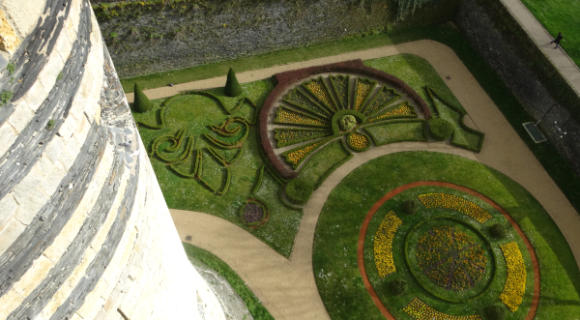
Gardens throughout the valley and along its confluents have been replanted, modified, restored or created over the past century, as one would expect from plots originally landscaped hundreds of years ago. Some have disappeared completely, for example Blois, where the city has grown over the garden.
Among the most notable visible today are:
Chambord. Chambord is a national domain where Francis I’s 16th-century castle is bordered by a reconstitution of a garden envision by Louis XIV in the 17th-century gardens and designed in the 18th century. The garden was inaugurated by President Hollande early this year.
Chenonceau. Perhaps due to its soap-opera quality, the historical anecdote that all visitors seem to know when arriving in the valley is this: After the death of her husband King Henri II, who’d been mortally wounded in a jousting tournament in Paris in 1559, Catherine de Medicis forced an exchange of castles upon the late king’s mistress Diane de Poitiers. The queen swapped her emotionless Chaumont overlooking the Loire for Diane’s more modernly elegant Chenonceau stepping across the Cher. Chenonceau’s role in that famous catfight has probably contributed to it being the most-visited privately owned chateau in France, though it is indeed a feast for the eye and the owners, the Meniers (chocolate magnate Henri Menier purchased Chenonceau in 1913), have developed a spectacular setting into a thriving business. The chateau is preceded by a gardens initiated by Diane to one side and by Catherine to the other. A separate garden provides the profusion of flowers seen inside the chateau. There’s also a labyrinth on the property, some donkeys and an English garden that will be inaugurated this fall.
Chaumont-sur-Loire. Meanwhile, back at the Loire, Chaumont is no longer the mammoth that Catherine was quick to swap. Today it would today be well worth an exchange. Overlooking the river between Blois and Amboise, this vast domain belonging to the region Centre-Val de Loire doesn’t need the Year of Gardens to call attention to itself as a destination for garden-lovers. Each year since 1992 an international assortment of landscape gardeners has been selected to create new gardens on a portion of the estate. This year’s theme is Flower Power. Altogether the gardens form a renewable space of innovation, creativity and pleasure for the senses.
Angers. Angers Castle is an impassive fortification on the Maine River. Though one doesn’t typically think of visiting the fortified castle of Angers for anything but a view of its imposing walls and the spectacle of the Tapestry of the Apocalypse inside, snippets of garden and horticulture plots along the top of the walls offer a panorama of the vegetal vocabulary of the French Renaissance. In 2017 Angers and Nantes were ranked as having best policies regarding green urban spaces and preserving diversity, according to the Observatoire des Villes Vertes, an organization that brings together directors of green spaces in cities throughout France. The OVV noted Tours, a central city in the Loire Valley, as the city with the most green space accessible to the public.
Azay-le-Rideau. Sitting on an island in the Indre River, Azay has finally been released from the scaffolding that for three years prohibited an open view of its 16th-century grace. Here it isn’t so much the variety of trees or the English garden that adds to the overall architecture of the setting as the surrounding water in which the castle is mirrored.
Other gardens
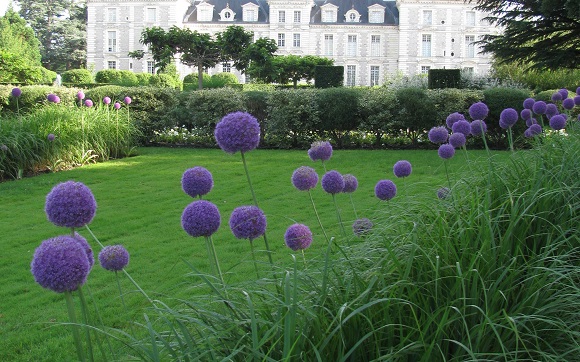
The diverse range of chateau gardens and other significant gardens in the Loire Valley that are in the spotlight this year are presented on the website Jardins en Val de Loire. Summer travelers looking to visit gardens beyond the blockbusters noted above will find ample suggestions there for further garden explorations and more breathing space. A program of events is also found on the site.
Don’t worry though if you can’t make it to the Loire Valley this year. The gardens and their history will still be here in the years to come.
© 2017, Gary Lee Kraut

